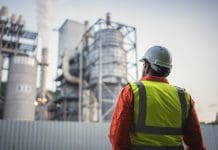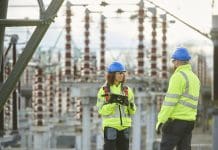Steve Voils, VP engineering at Acuity Brands, discusses the role of Operational Effectiveness in building operations and the built environment
Efficiency has traditionally been considered one of the most critical factors in evaluating building operations. However, recent research shows that an over-focus on system efficiency can be detrimental to overall performance from a systems, usage, and cost viewpoint.
From an operational standpoint, achieving measurable improvement requires an approach that values system effectiveness before determining efficiency. Operational effectiveness (OE) defines the most effective outcome from the onset and articulates how resources should be used to ensure the goal is met while managing evolving conditions.
What is Operational Effectiveness?
OE is fundamentally different from efficiency. Efficiency focuses on minimising resource use — time, effort, and expense — while effectiveness prioritises achieving the desired outcome. To apply OE, it is necessary to define the specific purpose of a process, consider all factors that will impact that process, and identify the best possible outcome. OE asks why a particular process is in place and what the most optimal outcome is.
It’s important to measure the OE of the systems in place, which considers not just reduction in usage but also defines each system’s specific purpose within a building and evaluates how that system is achieving its goal. Operational effectiveness (OE) measures how resources are actually utilised to achieve specific goals, emphasising continuous learning and autonomous adaptation to changing conditions.
While OE has been an integrated process within industries such as manufacturing, its application in building management systems has not been as widely understood, at least until recently. Research into how commercial buildings can improve refrigeration equipment operations uncovered many opportunities for OE applications. For instance, maintaining precise temperature control is vital for safety and reliability in the refrigeration industry, particularly for retail and pharmaceutical purposes. If energy efficiency is the primary goal to maintain the desired temperature, the most efficient way to meet that goal would be never to open the refrigerator doors.
In the refrigeration example, if a retailer notices their fridge isn’t maintaining its set temperature, a technician focused on operational effectiveness will first identify the root cause, such as a faulty compressor or doors improperly closing. Without considering OE, the technician might wrongly assume the fridge is under capacity, leading to unnecessary expenses when better employee training could solve the issue.
Advanced refrigeration systems, equipped with embedded sensors, autonomously adjust to environmental changes like temperature fluctuations or humidity shifts. These systems constantly monitor the interior environment to maintain the required temperatures, factoring in bursts of heat with each door opening, overall equipment performance, and other variances.
A refrigerator system driving toward the most effective operations accounts for these changes and adjusts temperatures as needed to maintain optimal ranges. These dynamic responses exemplify OE — balancing efficiency with the realities of operation to ensure a desired outcome.
Integrating OE in building operations
The lesson the refrigeration industry offers facilities managers is that while efficiency goals are critical, it’s important to consider how systems adhere to their established goals. If a system isn’t working as it’s designed, it provides no value in trying to focus on efficiency.
While energy efficiency is essential, if it comes at the expense of the practical use of a system, it defeats the purpose of optimal functioning in the real world. The most effective allocation of energy resources is deciding how the building’s climate control, lighting, and air purification systems should operate in a particular space with minimal interruption to daily business operations and occupant comfort.
In the case of buildings, their spaces are inherently variable — different offices and floors often alternate between being empty and crowded depending on the days of the week or activities underway. OE in such scenarios involves designing systems that can adapt to this fluctuating occupancy, calculating how many people are using a space and for how long, determining external conditions that could influence the environment, and determining space layout.
Keeping an HVAC system at a constant low setting might optimise energy use, but it would affect occupant comfort. Instead, a proactive approach that can autonomously and dynamically adjust climate control, lighting, and air purification based on current use helps meet both efficiency and effectiveness goals. Integrating weather forecasting data allows a BMS to pre-emptively adjust HVAC settings in response to temperature changes, avoiding energy spikes while maintaining indoor comfort.
IoT-enabled sensors can continuously monitor temperature, humidity, energy consumption, and occupancy levels. A system that can collect necessary data and use it to calculate OE is best equipped to adapt to changing circumstances and deliver on the target goals.
Changing circumstances can be highly variable – spanning changing numbers of occupants in a room, door openings in a fridge, ambient light through a window, or natural wear and tear of equipment in a system (for example – a clogged air filter).
This real-time data enables proactive system adjustments. A BMS might, for example, detect increased occupancy in a meeting room and adjust HVAC settings to maintain comfort without wasting energy. Similarly, lighting systems equipped with motion detectors can make sure that lights are switched off in unoccupied areas, adjust brightness to match natural light in occupied spaces, or lower window shades to reduce glare.
The future state – Empowering facility managers and occupants
Operational effectiveness relies on the combined resources of the right people and tools. Facility managers need intuitive tools to interpret system data and implement strategies based on insights from forecasting, identifying trends, and user feedback. Sharable interfaces support teams as they make informed decisions based on real-time data or respond to alerts that signal inefficiencies.
The transformation of connected spaces also requires a new understanding of how and where data is generated and processed. The concept of edge-to-cloud has been the standard – whatever systems need to be on-site happen within the edge, and the cloud handles larger computing power. However, edge-to-cloud is evolving into a more powerful framework, edge with cloud. Buildings depend on both edge and cloud to perform holistically in unison.
As buildings become increasingly intelligent, operational effectiveness will shape how they operate in the future. The best use of operational effectiveness is changing the narrative from “How are we measuring the effectiveness of equipment?” to a more comprehensive “How do I know if my systems are working well against their goals?” Integrating real-time monitoring, predictive analytics, and user-centric design into building management systems ensures that facilities are efficient and adaptable to evolving needs and a changing climate.














